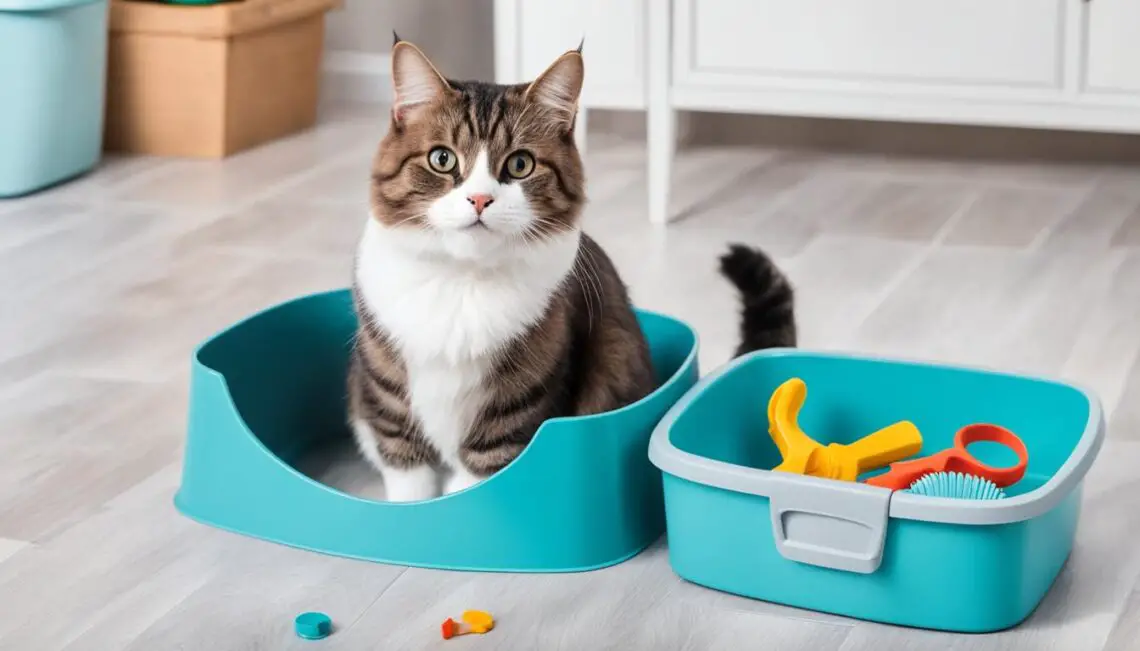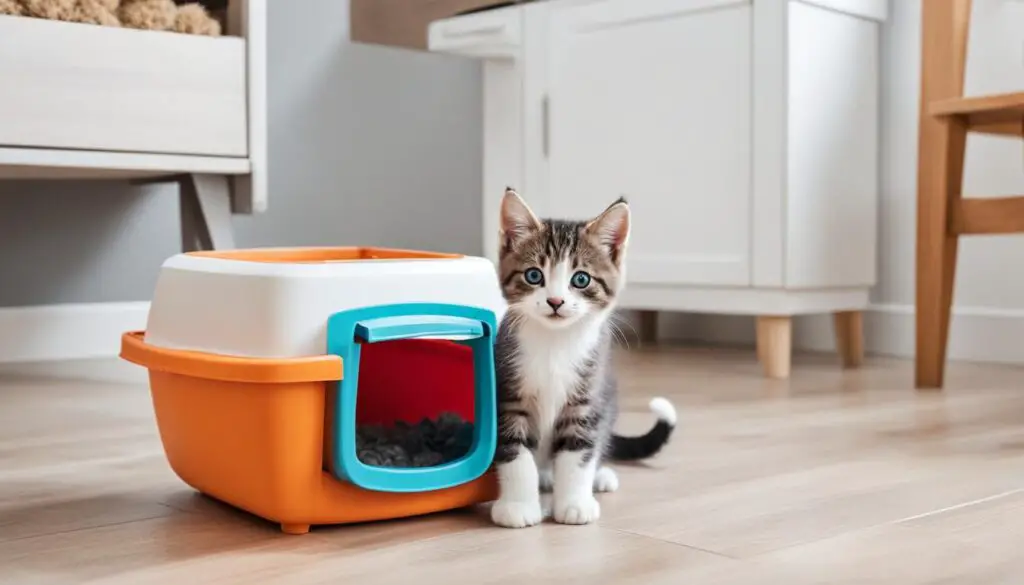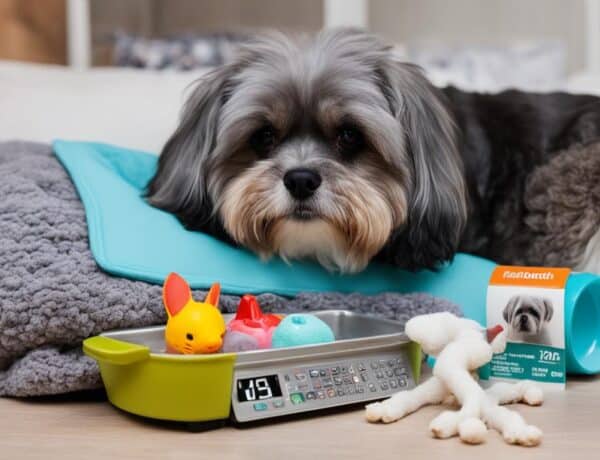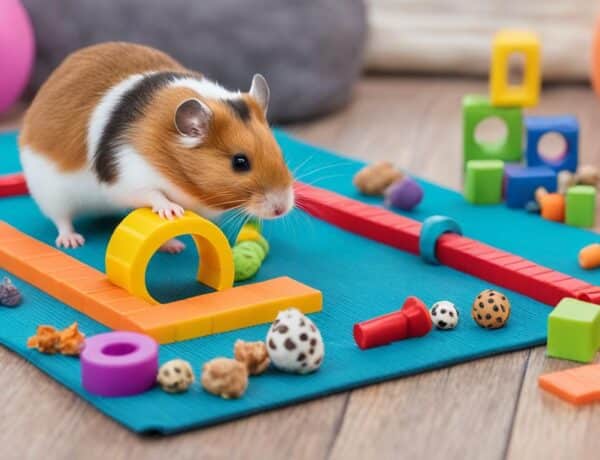Potty training is an essential aspect of caring for indoor cats. While most adult cats have natural instincts to use a litter box, kittens may require some assistance in developing proper litter box habits. In this article, I will explore effective potty training techniques for indoor cats, providing tips on when to start the training, choosing the right litter box, selecting the appropriate litter, and creating an ideal environment for successful potty training.
Key Takeaways:
- Start litter training kittens around 4 weeks of age.
- Choose a litter box that is kitten-friendly, considering size and comfort.
- Experiment with different types of litter to find the one your kitten prefers.
- Place litter boxes in well-lit areas with minimal distractions.
- Introduce your kitten to the litter box with patience and positive reinforcement.
When to Start Litter Training Kittens
As a responsible cat owner, it’s essential to start litter training your kittens at the right age. Starting the training at around 4 weeks of age is recommended, as this is when kittens begin weaning and become more independent in exploring their surroundings.
Prior to 4 weeks of age, mother cats take care of stimulating their kittens to eliminate and cleaning up after them. However, once they reach this developmental stage, it’s time to introduce them to the litter box.
If you have adopted an older kitten or adult cat, you can start the litter box training as soon as you bring them home. Remember, it’s important to have all the necessary cat potty training supplies ready before your new feline companion arrives.
| Starting Age | Potty Training Stage |
|---|---|
| Around 4 weeks | Begin litter training |
| Before 4 weeks | Mother cat stimulates elimination |
| Adopted older kitten or adult cat | Start litter box training upon arrival |
Choosing the Right Litter Box
When it comes to choosing a litter box for your kitten, there are several factors to consider to ensure their comfort and encourage proper litter box usage. It’s important to select a litter box that is kitten-friendly, appropriately sized, and provides the right level of privacy.
Kitten-Friendly Litter Boxes
Start by opting for litter boxes that are specifically designed for kittens. These smaller litter trays provide a more accessible and comfortable space for your furry friend. A recommended size for kitten litter boxes is approximately 13 by 9 inches. This size allows them to easily enter and exit the box without feeling overwhelmed.
Multiple Boxes for Multi-Cat Households
If you have more than one cat in your home, it’s essential to provide multiple litter boxes. Having at least one extra litter box than the number of cats ensures that each feline companion has their own designated space for elimination. This reduces the likelihood of territorial disputes and encourages consistent litter box usage.
Uncovered Litter Boxes for Freedom
Most cats, including kittens, prefer uncovered litter boxes. They appreciate the freedom of movement and do not like feeling confined or trapped. By opting for an uncovered litter box, you provide your kitten with a sense of security and ensure their comfort during their litter box activities.
It’s important to observe your kitten’s preferences and behavior to determine if they show a preference for enclosed or open litter box options. For some kittens, an enclosed litter box may provide the privacy they desire. If your kitten tends to dig vigorously or scatter litter outside the box, an enclosed litter box with high sides can help contain the mess.
Comparison of Litter Box Options
| Litter Box Type | Advantages | Disadvantages |
|---|---|---|
| Kitten-Friendly | – Accessible for kittens – Comfortable size | – Will need to upgrade as kitten grows |
| Uncovered | – Provides freedom of movement – Preferred by most cats | – Litter may be scattered outside the box |
| Enclosed | – Offers privacy – Contains litter | – Some kittens may feel trapped – Cleaning may be more challenging |
Remember, every kitten is unique, and their preferences may vary. Pay attention to your kitten’s behavior and adjust their litter box setup accordingly to create a comfortable and inviting space for successful litter box training.
Selecting the Appropriate Litter
When it comes to potty training your kitten, selecting the right litter is essential. Cats have their preferences, and choosing a litter that aligns with their preferences can make a significant difference in their overall comfort and litter box habits.
Most cats tend to prefer fine-grain litters due to their softer texture. The finer grains provide a more comfortable feel under their paws, mimicking the natural texture of soil. This is especially important for kittens who are just starting their potty training journey.
Additionally, cats may have preferences regarding clumping or non-clumping litters. Clumping litters are popular among cat owners because they make cleaning the litter box easier and more convenient. However, it’s important to consider what your kitten finds comfortable. Some cats may not enjoy the texture or the clumping action and may prefer non-clumping litters instead.
It’s worth noting that cats are known to have a keen sense of smell, and certain litter materials may trigger associations with food. For example, some cats may avoid litter made from corn or wheat-based materials due to the scent resembling their food. Experimenting with different types of litter will help you determine the one that your kitten finds most appealing and comfortable.
Remember, the ultimate goal is to create a positive and pleasant environment for your kitten’s potty training experience. By selecting the appropriate litter that aligns with their preferences, you can help ensure their comfort and encourage consistent litter box usage.
Now, let’s take a look at a table comparing different types of litter:
| Litter Type | Texture | Clumping | Material |
|---|---|---|---|
| Fine-grain clay litter | Soft and fine | Yes | Clay |
| Silica gel crystals | Gel-like crystals | Yes | Silica |
| Paper pellets | Soft pellets | No | Paper |
| Pine litter | Wood shavings | No | Pine |
| Recycled paper | Small pellets | No | Recycled paper |
Remember, each cat is unique, and their litter preferences may vary. Observing your kitten’s reactions and behaviors can give you valuable insights into their litter preferences. By considering their comfort and selecting the appropriate litter type, you can ensure a smoother potty training experience for both you and your furry friend.
Next, we’ll explore how to create an ideal environment for the litter boxes in your home.
Creating an Ideal Environment for the Litter Boxes
Proper placement of the litter boxes is essential to encourage your kitten to use them consistently. Cats prefer a sense of openness and dislike feeling cornered or trapped. So, avoid hiding the litter boxes in corners or closets.
Another vital aspect is lighting. Cats generally like to have adequate lighting in the area where they use the litter box. If necessary, you can consider using a night-light to provide a comforting ambiance.
Distractions can often discourage kittens from using the litter box consistently. It’s crucial to set up the litter boxes in areas with minimal distractions, away from loud noises or high-traffic areas. This will help your kitten focus on their elimination needs.
Additionally, ensure easy accessibility by placing litter boxes on every floor of your home. This way, your kitten won’t have to go far to find a suitable spot.
Creating an ideal environment for the litter boxes ensures that your kitten feels comfortable and confident when using them.
Introducing Your Kitten to the Litter Box
Properly introducing your kitten to the litter box is essential for successful potty training. By following a few steps, you can help your kitten develop good litter box habits and ensure a smooth transition.
- Show your kitten the locations of each litter box and allow them to sniff and explore. This helps them become familiar with the designated potty areas in your home.
- Gently place your kitten in the litter box, demonstrating the pawing action by running your fingers through the clean litter. This action helps them understand that this is the area for elimination.
- If your kitten doesn’t immediately use the litter box, don’t worry. Continue placing them in the box after meals, naps, or waking up. Consistency is key, and repetition will help them establish the connection between using the litter box and satisfying their elimination needs.
- Positive reinforcement plays a vital role in the training process. Whenever your kitten successfully uses the litter box, reward them with treats and praise. This positive reinforcement reinforces the behavior and encourages them to continue using the litter box.
“Introducing your kitten to the litter box requires patience and consistency. By following these steps and providing positive reinforcement, you can help your kitten develop good litter box habits during the potty training process.”
Conclusion
Potty training is a crucial aspect of caring for indoor cats. By following effective potty training techniques, you can ensure a clean and comfortable environment for your feline companion. Starting the training at the appropriate age, choosing the right litter box and litter, creating an ideal environment, and introducing your kitten to the litter box correctly are key factors in successful potty training.
Remember, patience is key when it comes to potty training your cat. It may take some time for them to develop good litter box habits, but with positive reinforcement and consistency, they will soon understand where to go for their elimination needs.
Providing a comfortable and accessible litter box setup, with multiple boxes if necessary, will help your cat feel more at ease and reduce the likelihood of accidents. Additionally, selecting the litter that suits your cat’s preferences, whether it’s fine-grain or clumping, is important for their comfort and satisfaction.
Overall, by implementing these potty training techniques, you can create a positive and hygienic environment for your indoor cat. Remember to be patient, consistent, and provide positive reinforcement to help your furry friend develop good litter box habits. With proper training, your cat will quickly become proficient in using the litter box, making both of your lives more enjoyable and stress-free.
FAQ
When should I start litter training kittens?
It is recommended to start litter training kittens at around 4 weeks of age.
How do I choose the right litter box for my kitten?
When choosing a litter box for your kitten, consider their size and comfort. Smaller litter trays, measuring about 13 by 9 inches, are recommended for kittens.
Should I provide more than one litter box for my kitten?
Yes, it is advisable to provide more than one litter box in your home, with a minimum of one more box than the number of cats.
What type of litter do cats prefer?
Cats generally prefer fine-grain litters due to their softer feel. However, they may also have preferences when it comes to clumping or non-clumping litters.
Where should I place the litter boxes in my home?
The placement of litter boxes is crucial to encourage your kitten to use them consistently. Avoid hiding the litter boxes in corners or closets and set them up in areas with minimal distractions.
How do I introduce my kitten to the litter box?
Begin by showing your kitten the locations of each litter box and gently place them in the litter box, demonstrating the pawing action. Continue placing them in the box until they begin using it on their own.







No Comments